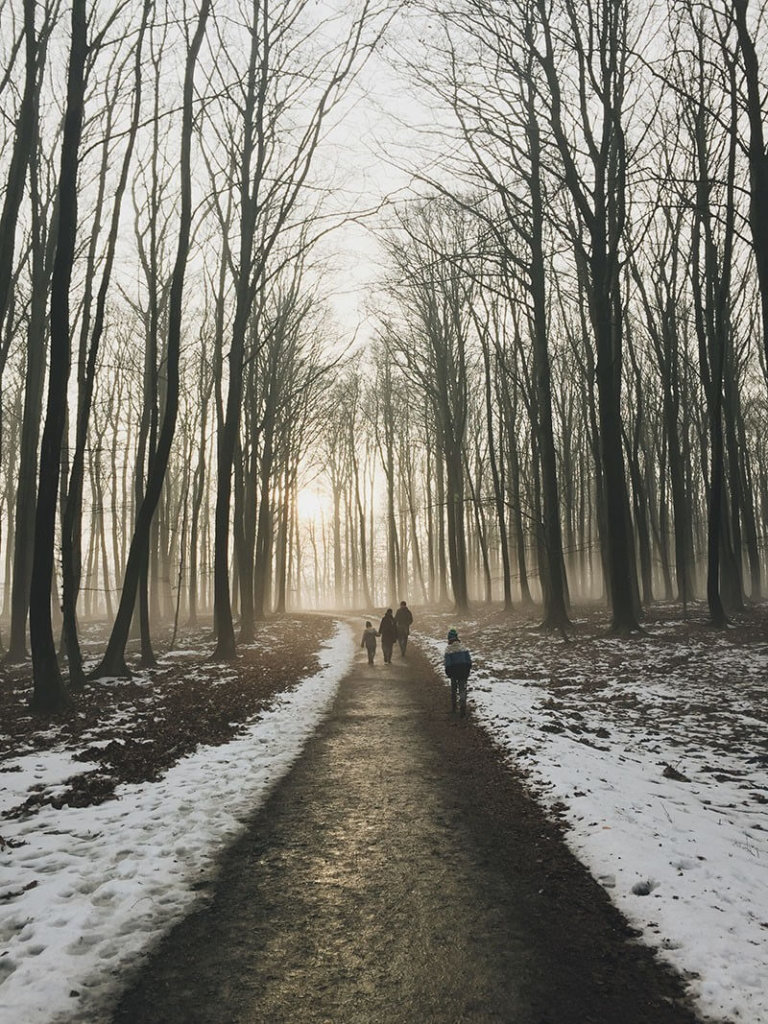Ignore the gray—get outdoors!
 If the gray days of November get you down, get outdoors! The National Mental Health Association (NAMI) finds that a one-hour walk, even in weak winter sun, can improve mental health. Late fall and early winter are prime times for seasonal affective disorder (SAD), a mild form of depression that occurs during the darker time of year. Research affirms what our mothers told us: Fresh air and exercise can help keep you healthy and happy.
If the gray days of November get you down, get outdoors! The National Mental Health Association (NAMI) finds that a one-hour walk, even in weak winter sun, can improve mental health. Late fall and early winter are prime times for seasonal affective disorder (SAD), a mild form of depression that occurs during the darker time of year. Research affirms what our mothers told us: Fresh air and exercise can help keep you healthy and happy.
Being safe in the outdoors has one more layer during hunting season. Be mindful of rifle season for deer, November 16 to December 1. Play it safe and walk in places that prohibit hunting. A few ideas:
Red Rocks Park, South Burlington. Four miles of trails in hemlock and pine forest that hug the shoreline and bluffs above Lake Champlain. Spectacular views of Shelburne Bay, the broad lake and the Adirondacks.
Ethan Allen Homestead in Burlington hosts nearly three miles of walking in the Winooski River Delta, including two boardwalks over wetlands. These trails connect to the Intervale.
Intervale Center hosts organic farms and community gardens. A nonprofit created to restore to fertility one-sixth of all open land in Burlington, its mission is to strengthen community food systems and encourage sustainable land use. Several miles of dirt roads and paths.
Rock Point is the largest parcel of undeveloped land in the city of Burlington. More than two miles of trails wind through 130 mostly forested acres with breath-taking views, one mile of Lake Champlain shoreline, and an unusual geologic feature, the Champlain Thrust Fault. Along this nearly 200-mile fault, older Dolomite has been thrust above shale that is 40 million years younger. If this sounds familiar, Mt. Philo also features older quartzite at its summit thrust over younger, softer shale that is crumbling under this weight. Check the website, rockpointvt.org, for directions and additional information.
The University of Vermont stewards a range of natural areas, including Pease Mountain in Charlotte. In addition UVM manages an abandoned Monkton quartzite quarry on Hoover Street in Burlington, from whence came building materials for the Redstone Campus. More familiar preserves include Colchester Bog, East Woods, Centennial Woods and the summit of Mt. Mansfield.
Winooski Valley Park District, manages 16 parks in seven area towns. Many include great walking trails, and all properties are posted. The district’s website includes descriptions, driving directions and maps. Parks are open from dawn until dusk with parking in lots or on nearby roads. Gates are locked at night, so don’t dally after dark. Dogs must be leashed at all WVPD properties. Always clean up after pets.
In the midst of hunting country in Huntington, Audubon Vermont posts 255 acres of hills and river valley. Five miles of trails thread through a range of natural communities, from hemlock swamp to northern hardwood forest. Beavers are active on the property and can make trail maps obsolete in the course of a season. Trails open dawn to dusk. Donations are encouraged.
At Shelburne Farms, 10 miles of trails allow walkers to explore historic buildings and grounds on 1,400 acres beside Lake Champlain. Rifle hunting is prohibited. Leashed dogs are permitted only from November 1 through the month of March.
Need more ideas? The nonprofit Local Motion hosts the Trail Finder website. The Trail Finder catalogs people-powered trails across the region for walking, biking and cross-country skiing. Features include restrooms, parking, dog friendly, historic site, natural area and wildlife area.
A few fun things to look for while you are outdoors:
Bright yellow streaming blooms of witch hazel that flowers after most leaves have fallen. Look for these bright spots in our woods in late autumn.
When you see fall flowers, including many asters, you will likely find bumble bees. The queens are curled up underground waiting for spring, but some male drones continue to feed until they are killed by a hard frost.
What you won’t see: spotted and Jefferson’s salamanders, both of which breed in local vernal pools in spring. A biologist from Vermont Center on Ecostudies tagged some salamanders and then tracked them to underground shelters. Salamanders can’t dig so they use tunnels excavated by mice, chipmunks and shrews. While salamanders use surface tunnels all summer, when the weather cools in the fall they choose vertical tunnels that lead deeper underground, escaping below the frost line for winter.
No matter the weather, get outdoors!

